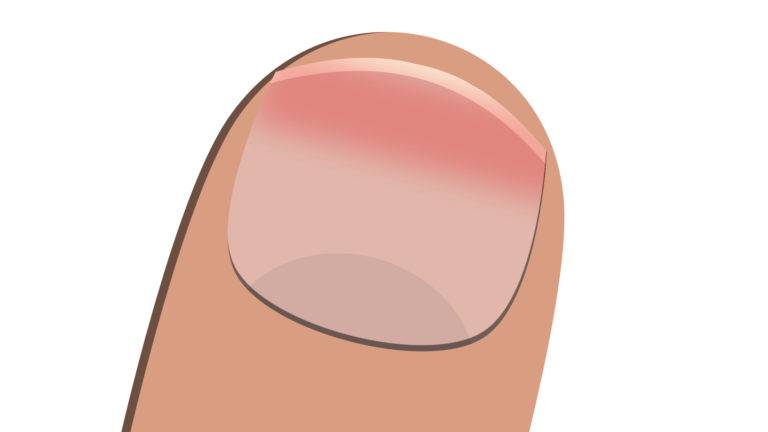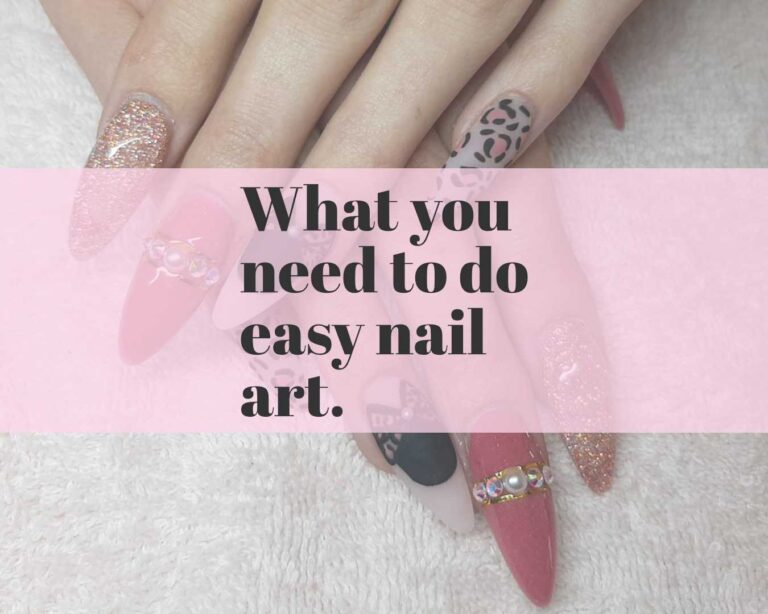

13 Common nail diseases and disorders
The good, the bad and the ugly. What to look out for when doing a client’s nails
Disclaimer: note, that I am not a medical professional. These nail disorders and diseases listed here are but a few of many. Home remedies are treatments that might not work in serious situations or on all individuals. Use at own risk. Don’t hesitate to advise your clients to seek medical attention in extreme cases.
Being a nail technician can be challenging sometimes. Seeing that we work face-to-face with people daily, and work through physical contact, we have to take care to be very cautious about how we work.
Nail technicians have to pay close attention to sanitization as well as disinfection, to prevent the spread of nail diseases amongst clients.
This post will disclose more on what to look for on client’s nails and methods to use to prevent your clients from contracting and spreading nail diseases.
Firstly I am going to list and discuss various nail disorders, that is not contagious and that you as a nail technician, most likely won’t be the cause of.
Some of these nail disorders are genetic, health-related, or self-inflicted diseases and disorders
the 13 common nail diseases and disorders

Scurvy
1. Scurvy
Scurvy is usually caused by a deficiency of vitamin C. It is known as a nutritional disease that affects the skin, hair follicles, gums and nails.
These symptoms are caused because Vitamin C is needed in your body to create collagen which is a vital part of connective tissues. These issues are important because they create structure in your body like making blood vessels.
It can be identified through bleeding under the nails. It is not contagious, but your client must be advised to seek medical attention.
2. Scurvy, periungual haemorrhage
As a person grows older, their nails change. They will grow slower and become dull and brittle.
The colour of the nails may also change from being see-through to a yellowish, opaque colour. Nails can become hard and thick and toenails may become ingrown.
The fingernail tips can start to peel, which may cause longitudinal ridges to develop on the nail plate.
Be wary as some of these nail changes may be caused by various infections, dietary problems, trauma to the nails, medication, etc. Advise your client to see a doctor for this nail disease

leuconychia
3. Leuconychia
It can be identified through white spots on the nails.
This is very common and may be caused trauma to the base of the nails, where the nail cells are created.
There is no need for worry, seeing that these small spots will grow out with time.

furrows and ridges
4. Furrows and ridges
These ridges may be horizontal, vertical or lengthwise on the nail plate.
If it is lengthwise it is normal and can become more noticeable with age. If a ridge runs across the nail plate it may be caused by reduced circulation, trauma to the nail or some sort of sickness. If it worsens your client will have to seek medical attention.

splinter haemorrhages
5. Splinter hemorrhages
Splinter hemorrhages are caused by a disruption of blood vessels in the nail bed. It looks like fine splinter-like lines under the nail.
This is usually caused by some sort of injury to the nail or by using certain drugs. It can also be caused by diseases.
The most common cause however is trauma to the nail bed. They will heal as time goes on.

ingrown nails
6. Ingrown nails (Onychocryptosis)
An ingrown nail is a very common nail problem. The big toenail is usually the one to get an ingrown toenail.
The condition can be caused by multiple factors including improper trimming of the nail, snug shoes, as well as poor posture.
It is caused when the corners of the nails start to curve and grow into the skin. This can be very painful and in extreme cases, can lead to an infection.
Your client must seek treatment as this can result in an infection and will be very uncomfortable until proper treatment has been administered.
7. Tumours and warts
Tumours and warts can be observed close to any piece of the nail entity. It can cause the nail plate to morph or be destroyed.
It might be classified as cancerous or benign. The most common non-cancerous tumours are warts. Warts can be classified as viral infections, that affect the skin surrounding, or underneath the nail.
They can be painful, and might sometimes cause limited use of the affected finger or toe. They will have to be removed through freezing or chemical application.
If the wart or tumour grows underneath the nail folds or under the nail plate, it will have to be removed through dermatologic surgery.

psoriasis (pitting)
8. Psoriasis
Psoriasis is a chronic skin disease that can be identified by red, scaly pieces of skin.
About 10 – 50% of people diagnosed with psoriasis, as well as 80% of people who suffer from inflammatory arthritis that’s associated with psoriasis, will also have nail problems.
The most common problems that these people might face with their nails are pitting, rippling, staining of the nail, reddish-brown discolouration of the skin under the nail, separation of the nail from the nail bed, splinter haemorrhages, crumbling and/or splitting of the nail, including swelling and redness of the surrounding skin at the base of the nail.
9. Nail biting (Onychophagy)
Nail-biting is a common problem among many people. This habit has been linked to anxiety and stress.
It will destroy how the nails look and it is a great way for infectious organisms to be passed from your fingers to your mouth and vice versa.
It can also cause the skin that surrounds the nails to be damaged which may cause infections.

habit tic
10. Habit tic
If your client repeatedly picks at the cuticle area, harm might be done to the matrix of the nail. This might cause the nail to grow abnormally.
The following diseases have to be looked out for when doing nails. These diseases are contagious and if not treated properly can spread from one nail to the other. These conditions can also spread between clients so be cautious.

green nail syndrome
11. Fungal infections
Fungal infections can cause the nail plate to detach from the nail bed. When this happens, it creates the perfect breeding ground for various mould’s and bacteria’s that will stain your nail plate as they grow. Here is a more comprehensive article on nail fungus from webmd.
They come in various colours including white, green, yellow or black. Not only the nail can be affected, but the skin at the end of the nail and the top part of the nail can also be affected by it.
Overall fungal infections are prominently found on toenails as feet are constantly in a warm damp environment.
Common infections on fingernails are candida and yeast infections. Nails are highly susceptible to fungal infections when constantly submerged in water or if the client is a diabetic.
Do not put any product onto a nail with a fungal infection. Advise your client to get treated by a doctor in extreme cases.
12. Onychomycosis
Onychomycosis is one of the worst fungal infections, as it is highly contagious and causes discolouration and abnormal growth of the nail.
This fungal infection will cause thinning, or peeling of the nail bed once it penetrates the nail plate. It can also cause lifting and even rotting of the nail bed or plate.
Under no circumstances should you put the product on such a nail. Your client has to seek medical attention as soon as possible.
13. Bacterial infection
Bacterial infections can be identified by swelling, redness and tenderness of the nail folds. Common causes are nail trauma and frequent exposure to water and chemicals.
Keep the infected area clean. If it worsens with time your client might have to seek medical help.
Home Treatments
Many of these conditions have to be treated by a doctor, dermatologist or podiatrist. But with milder cases like green nail syndrome (which is a bacterium that grows under the nail plate because of humid situations caused by exposure to water) you can advise your client on home remedies that work.
Apply thymol oil that can be bought at your nail store, to the base and under the nail. If you cannot find thymol oil, use Vicks vaporub (for adults) as it also contains thymol.
They can use a dropper and volume 10 peroxide to rid the nail of fungus. A couple of drops of peroxide under the nail will cause the fungal infection to fizz and boil out from under the nail.
Practice this every day until the nail is clean of any fungus. Your clients can also soak the infected nails in apple cider vinegar for 5 minutes per day.
Do not soak your nails together as the infection can spread to healthy nails.
Teatree oil is also a very good treatment for infected nails. It can be applied around and under the nail daily.
It is also very important to try and refrain from unhealthy habits like biting your nails, picking at your cuticles, not cleaning your nails properly, excessively working in water and chemicals and not moisturising your hands and nails.
Healthy habits are important for growing healthy natural nails. To learn more about growing healthy nails at home read my post here.
It is very important to inform your clients about the dangers of nail diseases and what they can do to protect themselves against nail funguses and bacterial infections. Prevention is always better than treatment. Here is an amazing article on webmd.com on healthy fingernails that I recommend reading if you want to keep your nails healthy and avoid these problems from the beginning











